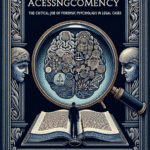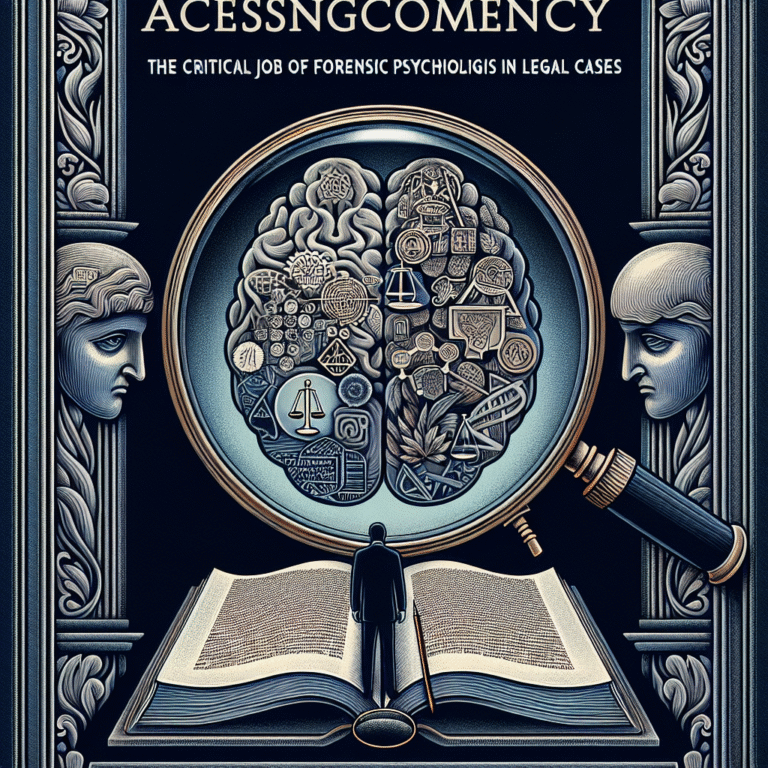
Introduction
In a world increasingly dominated by technology, the line between human cognition and machine intelligence blurs daily. At the heart of this fascinating convergence lies a discipline that is both crucial and often overlooked—Engineering Psychology. It isn’t merely a subfield of psychology; it’s a bridge that connects the intricate workings of the human mind with groundbreaking technological innovation. This intersection—The Intersection of Mind and Machine: Engineering Psychology in Tech Innovation—presents opportunities for creating products and systems that not only understand users but also enhance their experiences and capabilities.
As we embark on this illuminating journey, we will delve into the core principles of engineering psychology, explore real-world applications, and uncover how cognitive insights propel tech innovation to extraordinary heights.
The Foundations of Engineering Psychology
Defining Engineering Psychology
Engineering psychology, at its essence, aims to improve the interaction between humans and machines, making it a vital component of modern technology design. This field examines how psychological principles can be integrated into engineering practices to opt for optimal usability, safety, and performance. By understanding how users think, behave, and react, designers can create systems that are user-friendly and effective.
Historical Context
The roots of engineering psychology can be traced back to the early 20th century, with the emergence of ergonomics and human factors engineering. During World War II, concerns about operator error led to significant investment in human factors research. This historical grounding highlights the importance of human-centered design principles that continue to influence tech innovations today.
Cognitive Aspects
When exploring The Intersection of Mind and Machine: Engineering Psychology in Tech Innovation, it’s essential to comprehend how cognitive load, perception, and memory impact user interactions with technology. Factors like attention span, information overload, and visual perception need to be considered to design intuitive systems.
The Role of Human-Centered Design
Principles of Human-Centered Design
Human-centered design (HCD) focuses on creating products tailored to the user’s needs, abilities, and behaviors. By prioritizing user experience (UX), HCD ensures that technology serves to enhance human capabilities rather than overwhelm them.
Key Principles of HCD
- User Involvement: Engaging users throughout the design process.
- Iterative Design: Continuously testing and refining products based on user feedback.
- Accessibility: Ensuring products are usable by people of all abilities.
Case Study: The Design of ATMs
One of the most successful examples of HCD is the design of Automated Teller Machines (ATMs). Early iterations presented users with complex interfaces that led to confusion and frustration. By employing principles of engineering psychology, designers simplified the interface, introduced intuitive icons, and standard practices that increased user comfort and efficiency. As a result, ATM adoption skyrocketed, showcasing the vital role that understanding user psychology plays in tech innovation.
Analysis of the ATM Case Study
The evolution of ATM design resonates with the core tenets of engineering psychology—understanding cognitive processes significantly enhances user experience. By considering how users interact with machines, designers created a more efficient banking system that meets users’ needs seamlessly.
Advancements in Technology and Their Psychological Implications
Machine Learning and AI
With the rise of machine learning and artificial intelligence, the interactions at The Intersection of Mind and Machine: Engineering Psychology in Tech Innovation have evolved dramatically. These technologies are designed to learn from user behavior, thereby enhancing personalization.
The Feedback Loop
Incorporating user feedback into AI systems allows for improved accuracy and user satisfaction. For instance, platforms like Netflix and Spotify leverage algorithms that analyze user preferences to recommend content—illustrating how engineering psychology directly impacts user experience.
Virtual Reality (VR) and Gaming
Virtual reality represents a significant technological innovation that merges human cognition with machine interfaces. Here, engineering psychology is applied to create immersive experiences that influence user emotions and behaviors.
Case Study: VR Therapy
VR therapy has emerged as a groundbreaking approach in psychological treatment, particularly for phobias and PTSD. By immersing users in controlled, virtual environments, therapists can guide them through exposure therapies. This application showcases the powerful intersection of cognitive principles and innovative technology.
Analysis of VR Therapy
The technological capabilities of VR, combined with insights from engineering psychology, allow for more profound therapeutic impacts. By understanding the mind’s response to simulated environments, treatment can be tailored to maximize effectiveness and user comfort.
User Experience and Behavioral Design
Understanding User Behavior
One of the lesser-discussed aspects of engineering psychology is behavioral design—the practice of influencing users’ actions through design. This concept can greatly enhance usability and user satisfaction when merging mental processes with technology.
Key Elements of Behavioral Design
- Nudges: Small design changes that encourage users to make better choices.
- Defaults: Pre-set options that steer users towards desirable outcomes.
Case Study: Health Apps
Health applications like MyFitnessPal employ behavioral design techniques to promote healthier habits. By simplifying data entry and utilizing gamification elements, these apps encourage continued user engagement and adherence to fitness goals.
Analysis of Health Apps
The incorporation of behavioral design into health apps exemplifies engineering psychology in action. Users are more likely to succeed when their mental processes are understood and accommodated by the application design. This illustrates the profound impact of psychology in engineering innovative tech solutions.
Future Innovations at The Intersection of Mind and Machine
The Next Frontier: Neurotechnology
Neurotechnology, which merges neuroscience with engineering, represents a burgeoning field at The Intersection of Mind and Machine: Engineering Psychology in Tech Innovation. This technology has the potential to revolutionize how we interact with machines.
Brain-Computer Interfaces (BCIs)
BCIs enable direct communication between the brain and devices, opening doors for those with disabilities. For example, research is ongoing into using BCIs for controlling prosthetics merely through thought. This application reiterates the importance of engineering psychology in guiding these innovations to ensure efficacy and usability.
Ethical Considerations
As we venture further into the realm of neurotechnology, ethical considerations come to the forefront. Ensuring user consent, data privacy, and comprehension of the technology’s implications are crucial in maintaining user trust.
Conclusion: The Future is Human-Centric
The journey through The Intersection of Mind and Machine: Engineering Psychology in Tech Innovation reveals a landscape rich with potential. As technology advances, engineering psychology will play an increasingly pivotal role in shaping user experiences, ensuring innovations resonate on a human level.
By continuing to prioritize cognitive understanding in engineering practices, we can foster innovations that serve society’s best interests. As we move forward, let us remain committed to creating technologies that not only meet functionality but also uplift and enhance the human experience.
FAQs
1. What is engineering psychology?
Engineering psychology focuses on the interaction between humans and machines, utilizing psychological principles to improve design practices for user efficiency and satisfaction.
2. How does engineering psychology influence tech innovation?
It helps designers understand users’ cognitive processes, allowing for the creation of systems that are intuitive and meet user needs effectively.
3. What is human-centered design?
Human-centered design emphasizes creating products based on user needs, behaviors, and experiences, ensuring optimal usability and satisfaction.
4. Can you give an example of engineering psychology in real-life applications?
Yes! The design of ATMs is a classic example where user frustration prompted redesigns, resulting in more intuitive interfaces and increased user adoption.
5. What future technologies are being developed that utilize engineering psychology?
Neurotechnology, particularly Brain-Computer Interfaces (BCIs), represents a promising area that merges cognitive insights with innovative tech for direct brain-device communication.
By exploring and applying the principles discussed, we can ensure that humanity remains at the forefront of technological advancement, crafting a future where mind and machine harmoniously coexist.















